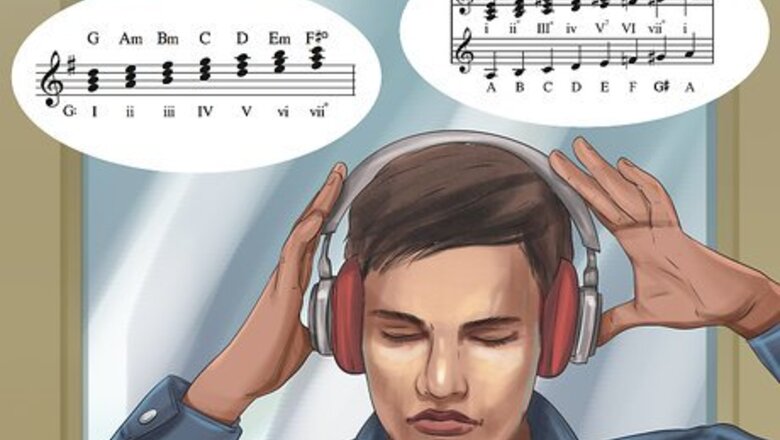
views
Evaluating the Lyrics
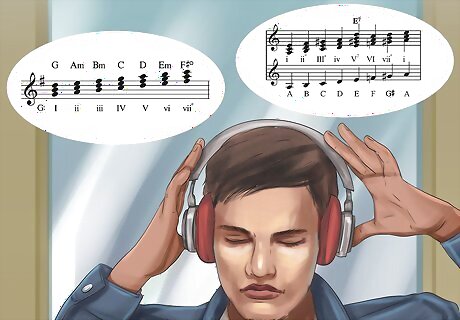
Determine the tone of the lyrics. The tone of your song will guide a lot of the choices you make regarding the tune. For example, lyrics that are sinister and dark would be suited to minor chords or scales, which generally sound gloomy, somber, or creepy. A bright, happy sounding song would work well with major chords and scales. Experiment to find what works best with your lyrics. Light, frolicking lyrics could work well with quick, split note rhythms, like runs of eighth or sixteenth notes. Dramatic lyrics can be highlighted with power chords. Use these to punch up drama at points throughout the song.
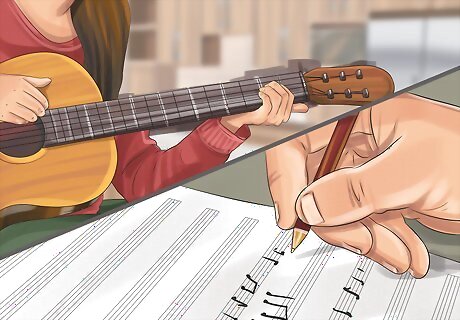
Allow the imagery of the lyrics to shape the tune. Your tune should have contour. A gentle rise and fall in the tones of your tune would be suitable for soft, mellow, or soulful songs, like pastorals or songs about natural beauty. Large tonal jumps can add edge, heightened emotion, and showmanship, like might be suitable for a rock ballad. Ask yourself, "What is the setting of this song?" Use this question as a guide for the choices you make when producing the tune. What images are brought to mind when you read the lyrics? If you see gentle, rolling hills, you could decrease the tonal contour of the tune to imitate this quality. Setting includes weather and atmospheric lighting. Songs that might be useful for gaining a sense of this include "L'orage" (The Storm) by Burgmüller, "The Planets" by Holst, and Prelude, Op 28, No. 15 ("Raindrop") by Chopin.

Reflect the living world in your tune. Your song may have a quality similar to a living creature, like "The Flight of the Bumblebee" by Rimsky-Korsakov. In this song, Rimsky-Korsakov uses quick runs of broken notes to imitate the chaotic, rapid fluttering of wings and the industriousness of bees. Your lyrics may have the sense of a creeping predator, like a large cat stalking its prey. This could be imitated in the tune with a flowing tonal contour that builds to edgy minor chords. There may be a point in your song that moves at a gallop, like a horse. Include broken note runs and bright, free sounding major chords. Other songs you might want to listen to for a better understanding of the living quality of songs include "Dragonfly Keeper" by Phildel, "Madama Butterfly" by Puccini, and the French horn (wolf) part of the opera Peter and the Wolf by Prokofiev.
Setting a Tune to Lyrics
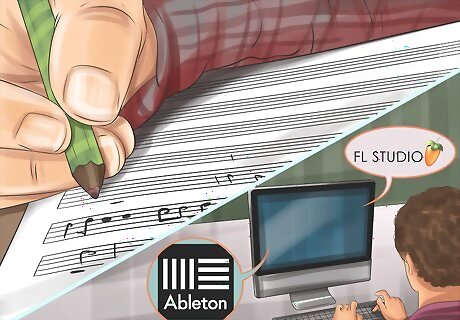
Write out your lyrics on staff paper. Staff paper has groupings of five lines on which musical notes are drawn. Alternatively, you can type up your lyrics in a music making program on a computer. Placing the lyrics side by side with the staff will help you to connect each word/syllable of your lyrics with its associated part in the tune. Some music making programs you can use on your computer include Ableton Live, Fruity Loops (FL) Studio, Steinberg Cubase Pro, and Apple Logic Pro. It's best to use a pencil when drafting your song on staff paper. You'll likely have to make changes as the song develops.
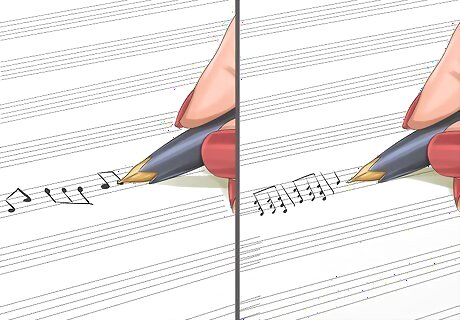
Break each word into syllables. This is a simple way of making sure each syllable gets a note. In some cases, you may want to sustain a note through several syllables or break up a note into a run for a single syllable. Even if you plan on stretching a note out over many syllables, breaking lyrics into syllables will help you keep track of the beat.
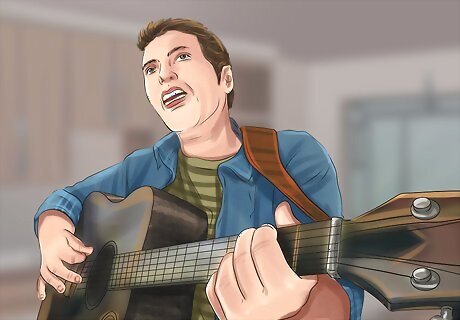
Choose a note/tone for each syllable. Generally, each syllable of the lyrics should receive a tone. This forms the main throughline of the song, which is often referred to as the "melody." Keep the overall contour, imagery, and alive (animalistic) qualities of your lyrics in mind while choosing the range of tones for your tune. Sometimes, at the end of a musical phrase, a sustained note can add impact and feeling. Experiment with sustained notes to find what works best for your lyrics. In some cases, you may want to leave out music to showcase the lyrics. This is called a "rest" in music. Try inserting a rest for certain syllables to add tension.
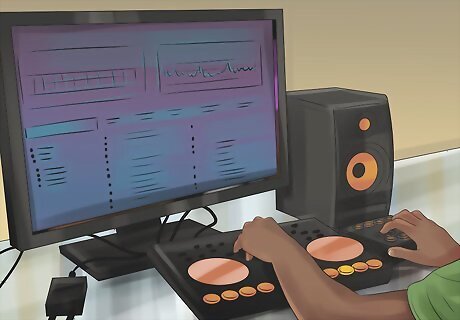
Listen to your melody. If you're making music on your computer, you'll likely be able to play the melody you've composed through headphones or speakers. Listen to the recording throughout the composing process, and adjust it to suit your preferences and style. Listen to your track and the various parts you add to it throughout the music production. Sometimes tones, chords, or instruments that you expect will work won't sound very good, and vice versa. Continue to make adjustments to the parts you've written or the parts you'll add later as your song takes shape. Change the music with your pencil and eraser or composing software on your computer.

Add in other instruments. Be sparing with the instruments you add. Too many can contribute to a muddy or oversaturated sound. Limiting the number of instruments (including voices) you add to your song to seven or fewer will help prevent this. Create harmony between the main throughline of your song (melody) and the parts played by other instruments. Add more instruments to the mix when at high energy, dramatic, or emphasized moments in your lyrics. Doing so can amplify these qualities. EXPERT TIP Halle Payne Halle Payne Singer/Songwriter Halle Payne has been writing songs since the age of eight. She has written hundreds of songs for guitar and piano, some of which are recorded and available on her Soundcloud or Youtube channel. Most recently, Halle was a part of a 15-person collaboration in Stockholm, Sweden, called the Skål Sisters. Halle Payne Halle Payne Singer/Songwriter Halle Payne, singer/songwriter, tells us: "Most songs build and develop over the course of the track. You might start with just piano, then stack guitar, vocals, and vocal harmonies on top as the song builds. Later in the song, you might strip all of that away, and then come back for a big final chorus!"
Achieving Success as a Music Producer

Get feedback on your song. It's likely you'll spend a lot of time working on your song. This makes it easy to miss certain things. A fresh pair of ears can help you identify trouble spots. Ask for specific feedback and use this to adjust your song or create new songs. Your family and friends may not be completely honest with you to protect your feelings. For this reason, you should also play your song for people who don't know you as well.
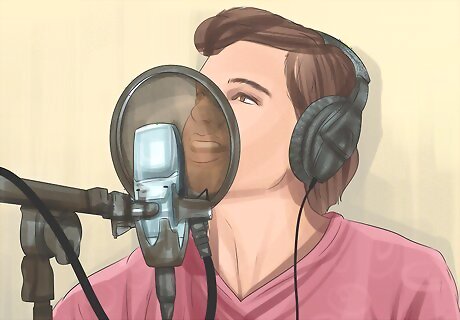
Upload your music to a digital platform. Record your song, if necessary. Post it on platforms like YouTube, SoundCloud, BandCamp, Spotify, and more. Use appropriate tags and labels when you post, like "drum and bass," "folk music," or "hip hop." Without proper tagging and labeling, your uploaded music will be hard for listeners to find. Remember to include sub-genres or associated tags. To the tag "drum and bass," you might add, "uptempo," "sunny," or "liquid" to provide more information on your song at a glance. Use the public reaction to your song to improve it. However, take online criticism with a grain of salt. Some critique may be unfounded or even cruel.

Build your online presence. Use social media, like Twitter, Facebook, YouTube, and similar social media sites to connect with fans. Post information about new releases, merchandise, and upcoming performances. Communicate and network with other music professionals through these sites. Building an online following can take a lot of work. Many professional songwriters have their online accounts managed by publicists and agents. Hold contests through social media to drum up fan involvement. For example, you might give away free merchandise to certain fans through a social media raffle.

Connect with other songwriters and music professionals. Relationships with other songwriters and music professionals can open up new opportunities for your career. These people can put you in touch with event staff, help you promote new work, and might even be valuable collaborators down the road. A business card will make it easy for you to pass off your contact information to suitable individuals even at distracting or loud events. Send a friendly message through email or social media to new acquaintances after you meet them.


















Comments
0 comment